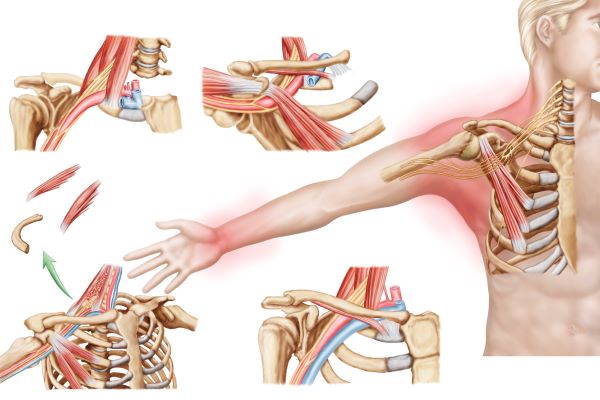
Know the Facts
Thoracic Outlet Syndrome (TOS) is a group of disorders that causes compression or damage of the nerves and/or the vessels in the lower neck area. The thoracic outlet is the space between the first rib and the top border of the clavicle. Depending on the structure that is being compressed, there are three types of TOS, neurogenic, arterial and venous.
Risk Factors
Young active athletes (such swimming, baseball, volleyball players) who participate in activities involving repetitive motions above the shoulder level, females or people with occupations that require repetitive motions of the arm.
Symptoms
Pain in the shoulder and neck, easy fatigue with repetitive motions, arm swelling and discoloration, headaches, hand numbness and weakness of the neck, chest and arms; cold sensitivity and poor circulation in the hands and fingers, sleep deprivation and decreased quality of life.
Diagnosis
Making a correct diagnosis is crucial and sometimes difficult. Doctors who treat the conditions need to be familiar with this disease. Many times, a multidisciplinary approach among vascular surgeons, orthopedic and pain specialists is required.
Chest and cervical spine x-rays, vascular Duplex Ultrasound, CT scan, MRI and nerve conduction studies.
Treatment
For neurogenic TOS, a conservative approach with physical therapy and involvement of pain specialists is initially performed. Failure of conservative management may require surgical intervention. A majority of the time, for arterial or venous TOS, surgical treatment is preferred to reduce the risk of acquiring a blood clot or preventing recurrence; and to avoid other major arterial complications.

